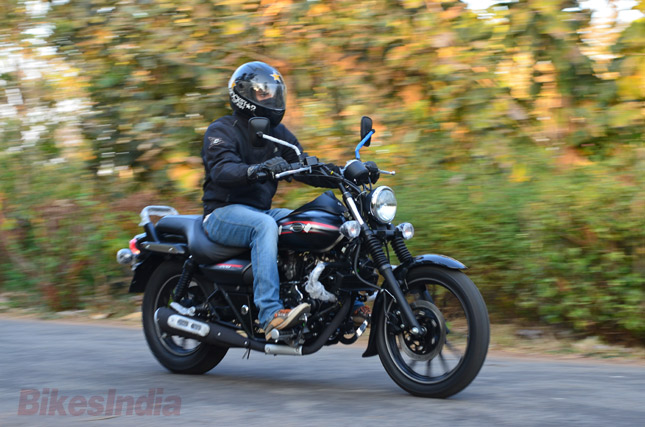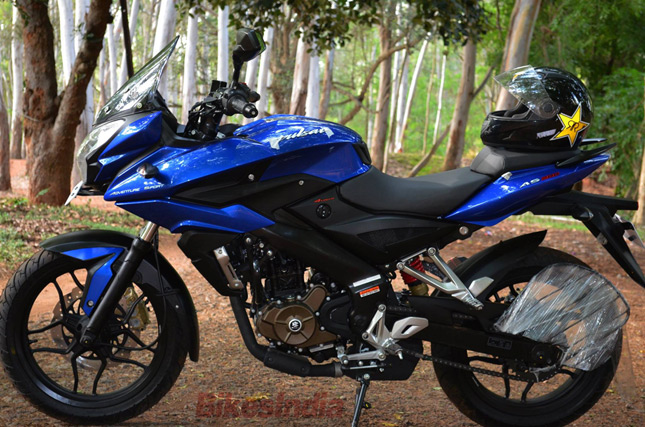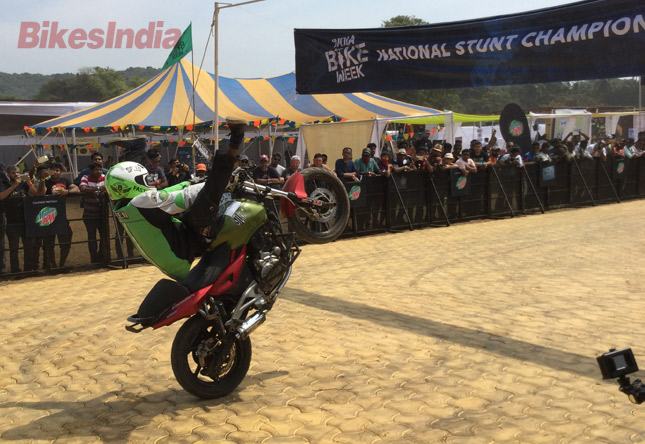 Power, Torque, Speed- every quintessential motorhead is obsessed with these figures for their favorite set of wheels. However, there tends to be a lot of misconception and ignorance regarding the interplay of these factors and how they reflect a vehicle’s behavior.
Power, Torque, Speed- every quintessential motorhead is obsessed with these figures for their favorite set of wheels. However, there tends to be a lot of misconception and ignorance regarding the interplay of these factors and how they reflect a vehicle’s behavior. We tend to believe that a higher rated brake horse power (bhp) means a better bike. Let me share a secret, that’s big misconception and a myth. While greater power figures do give an indication of a bike’s performance, there are other things to be considered before coming to a decision. So let’s cut the chase and settle this for good.
What Is Power?
Textbooks say that power is the rate at which work is done. The word to be focused here is RATE. If the work of getting from place A to B is done at a higher rate, it means you get there faster. So, higher rated power means a greater top speed. But a greater high speed alone doesn’t equate to better performance, does it?
So what else equates to better performance? Torque. How you ask? I’ll get to that, but first things first.
What Is Brake Horse Power?
Have you noticed that bike power ratings are often given in terms of brake horse power or bhp. Ever wondered what that means? No machine is 100% efficient, our vehicles being no exception. Some power produced by the engine is lost to mechanical inefficiency like power loss due to slippage in the clutch or friction in the gearbox. An engine always produces a little more power than bhp. The figure is actually the indicated power of that engine. When we subtract power losses from the indicated power we get bhp.
READ ALSO: Difference Between Power & Torque- Which Is Better?
Brake horse power gets its name from the fact that this is the power that should be applied to brake a dynamo-meter coupled to the engine while measuring its power output. It is measured in term of horse power, hence the name. This is the power that actually spins our wheels and hence it is always cited instead of the indicated power.
What Is Torque?
I’ll skip quoting the textbook and speak totally in motorhead terms. The push that you feel when you squeeze the throttle hard is torque. The urge with which your vehicle accelerates is torque. The readiness with which your tyres tend to spin out is torque. In other words, more torque = better acceleration. Torque is the fun element of riding hard.
An interesting analogy to understand torque-
When we pedal a bicycle we are applying torque at the driving sprocket. This torque is responsible for moving the bicycle ahead. Similarly, in an engine, the piston is moving up and down and it is applying torque on the crank, which in turn is responsible for moving the bike ahead.
How Are Power And Torque Related?Textbooks say that power is the rate at which work is done. The word to be focused here is RATE. If the work of getting from place A to B is done at a higher rate, it means you get there faster. So, higher rated power means a greater top speed. But a greater high speed alone doesn’t equate to better performance, does it?
So what else equates to better performance? Torque. How you ask? I’ll get to that, but first things first.
What Is Brake Horse Power?
Have you noticed that bike power ratings are often given in terms of brake horse power or bhp. Ever wondered what that means? No machine is 100% efficient, our vehicles being no exception. Some power produced by the engine is lost to mechanical inefficiency like power loss due to slippage in the clutch or friction in the gearbox. An engine always produces a little more power than bhp. The figure is actually the indicated power of that engine. When we subtract power losses from the indicated power we get bhp.
READ ALSO: Difference Between Power & Torque- Which Is Better?
Brake horse power gets its name from the fact that this is the power that should be applied to brake a dynamo-meter coupled to the engine while measuring its power output. It is measured in term of horse power, hence the name. This is the power that actually spins our wheels and hence it is always cited instead of the indicated power.
What Is Torque?
I’ll skip quoting the textbook and speak totally in motorhead terms. The push that you feel when you squeeze the throttle hard is torque. The urge with which your vehicle accelerates is torque. The readiness with which your tyres tend to spin out is torque. In other words, more torque = better acceleration. Torque is the fun element of riding hard.
An interesting analogy to understand torque-
When we pedal a bicycle we are applying torque at the driving sprocket. This torque is responsible for moving the bicycle ahead. Similarly, in an engine, the piston is moving up and down and it is applying torque on the crank, which in turn is responsible for moving the bike ahead.
Ignoring the units and getting to the bare bones of it,
Power = Torque X Speed
Mind you, this speed is the rotational speed of engine in rpm that your tachometer reads.
An engine produces a fixed power at any given speed. When you divide this power by the speed, you get the torque at that speed. Simple? However, the torque produced by engine is too low to actually drive your bike. For example, the Bajaj Pulsar 200 AS produces a peak torque of 18.3 Nm at an engine speed of 8000 rpm. While 18.3 Nm maybe a lot more torque than what other bikes in this segment produce, objectively speaking, it is a small value. How small? To put it into perspective, a cyclist can easily apply a torque of 24 Nm while riding a bike. So how do we get that insane acceleration when the torque produced by engine is so meek? This is where the gearbox comes into play.
 What Does The Gearbox Do?
What Does The Gearbox Do?We have already established that the torque produced by the engine is not enough to directly drive your bike. What also should be noted is that the speed of the engine is extremely high to realistically let it directly drive your bike. Some quick math can tell you that if the wheel of the 200 AS is spinning as fast as the engine, than at 10000 rpm the bike would be travelling at 180 kmph!
What the gearbox does is manipulate how the power is split (since, Power = Speed X Torque). The gearbox decides how much torque and speed we get from the power produced by the engine. It effectively reduces the engine speed to the wheel’s speed and in turn increases the torque manifold.
Also, to suit our various driving requirements, like high acceleration or cruising on the highway or climbing a steep slope, the gearbox splits the power into speed and torque in various ratios. A 6 speed gearbox gives you six different ratios in which the power is divided into speed and torque. Every gear has an inherent top speed and maximum torque. As you go into higher gears, the top speed is increased at the expense of maximum torque.
READ ALSO: Reason To Love Torquier Motorcycle Engines
A quick exercise to demonstrate this effect would be to run your bike at a constant engine speed, say 5000 rpm, in different gears. You will notice that the vehicle tends to run at a higher speed in higher gears even though the engine is running at the same speed. Also you would notice that further acceleration from this point gets slower as you work your way into higher gears. This clearly demonstrates a reduction in torque and a comparable increase in speed.
Bonus: Ever wondered why stunt bikers swap their stock output sprockets with larger aftermarket ones? To increase the torque so that popping those awesome wheelies becomes easier. But nothing in life comes free and the increased torque comes at the expense of a lower top speed.
 Power Delivery
Power DeliveryNow that we know how power, torque and speed are interrelated and how they reflect the performance of a bike, let's get to the other important factor that define a bikes performance, namely, how the power is delivered.
Some bikes have a very linear power delivery. This means that power is equally distributed throughout the rev range. Whereas some have most of their power concentrated in a particular rev band. None of these scenarios are good or bad, it depends on what the bike is intended for. For cruisers which are meant to run on the highways at constant speed, it would be preferable to have most of the power at lower revs to keep the engine running slow and achieve better fuel efficiency (like the Bullet or Avenger). For bikes meant for track, it is preferable to have a linear power delivery so as to get equal acceleration throughout the rev range (nods at R15).
Now my pal, you are enlightened. The next time bike performance talk comes up at the office cooler, you will know your stuff.
By: Nehal Chaliawala











